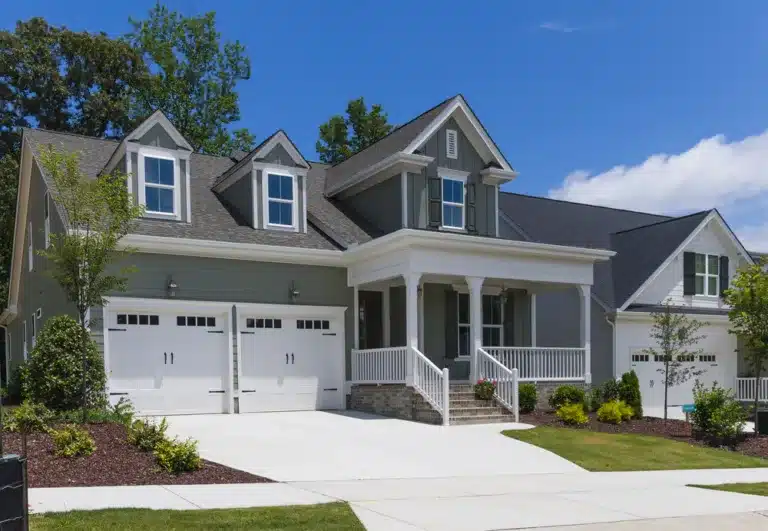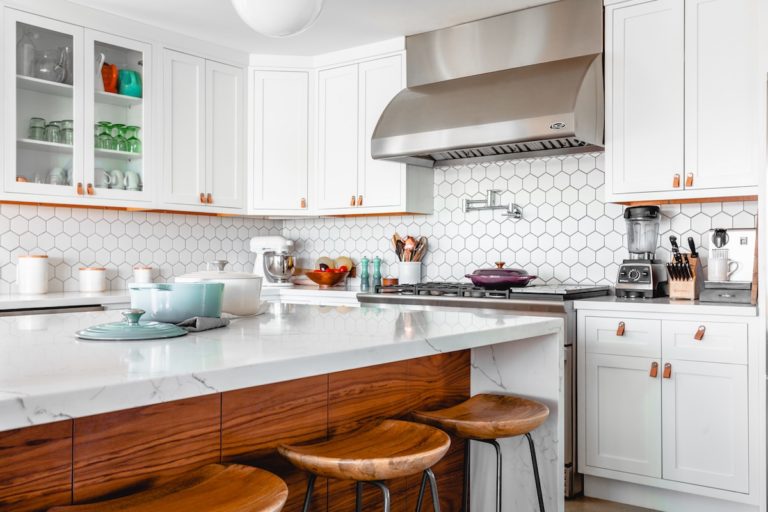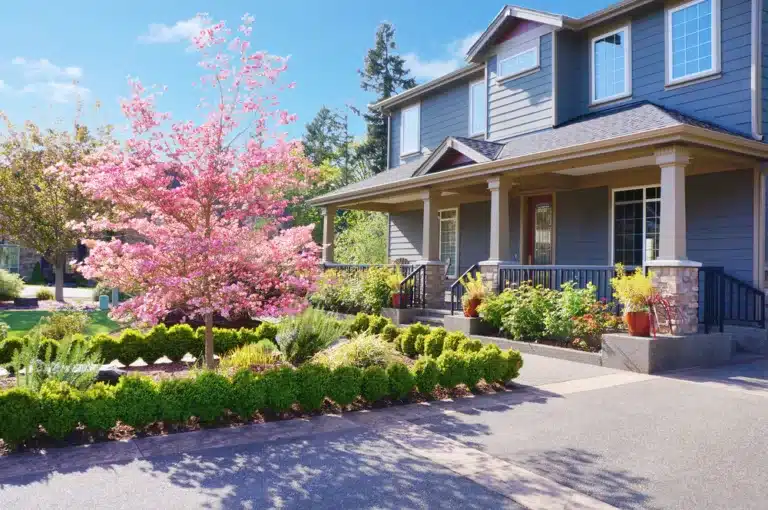What do you envision when you think of homeownership? Arriving home to a bustling condo or townhome community and waving to a friendly neighbor in an adjoining unit? Pulling your car into your own home on a parcel of land in the country?
As you think about your perfect home, we’ll also answer this question: What is a single-family home?
At Morty, we’re here to guide you through your initial steps, helping you visualize whether you’re drawn to adorning the front door of a single-family home with a wreath, or if your preferences lean toward a different housing style altogether.
Within this article, we’ll delve into the precise definition of a single-family home, explore the advantages and considerations of this type of dwelling, discuss alternatives to single-family homes, and provide insights into financing options to instill confidence as you approach your mortgage closing.
Ready? Let’s dive in!
What is a Single-Family Home?
Single-family homes are detached homes in which the structure doesn’t share walls with other residences. Some attached dwellings (like townhouses) might fit the definition of a single-family house because they might contain a wall that separates the units from top to bottom. (The U.S. Census Bureau says that in order to be classified as a single-family structure for attached units, each must be separated from the adjacent unit by a ground-to-roof wall.)
Other characteristics of a single family house include the fact that it sits on its own land, has its own entrance and exits, has one owner that pays for utilities, and has a single kitchen. It may also offer more privacy than other dwelling types.
The Pros and Cons of Single-Family Homes
Still on the fence about whether a single-family home will work best for your situation? It’s true that while popular, single-family homes aren’t the right fit for everyone. Let’s go over the pros and cons.
Pros of Single-Family Homes
- More space: Single-family homes often offer more space than multi-family homes and usually come with more land as well. You may also get more storage space with this type of home.
- More privacy: Single-family homes usually offer more privacy because of a lack of shared walls.
- Fewer neighborly nuisances: You won’t have to deal with typical apartment issues, such as upstairs neighbors’ thudding feet or music cranked through threadbare walls.
- Freedom to build or modify: You might have more opportunity to build or modify your home — it’s often more difficult to expand your living space in a multi-family home. However, you still have to follow your town or city zoning laws to add on to a single-family home.
- Fewer rules: You may not have to follow as many rules and regulations with a single-family home as you would with other dwelling types, such as a condo with a homeowners association (HOA).
Cons of Single-Family Homes
Let’s take a look at some of the potential downsides of single-family homes:
- Higher purchase price: Single-family homes often come with higher price tags than other dwelling types, especially when you compare them against prices of various homes in similar geographical areas.
- Higher down payment and closing costs: The down payment refers to the amount you put down on a home. You pay closing costs at closing for items like the title search fee. Buyers typically pay closing costs in their entirety. However, you can negotiate with the seller to help cover closing costs, often called seller concessions or seller credits. Ultimately, you may pay more for a down payment and closing costs on a single family home compared to another type of home.
- More financial responsibility: Single-family homes may cost more upfront and often throughout the years that you live in them. Condos and townhouses often provide certain services that cut down on the cost, though you will likely pay homeowners association (HOA) fees.
- Sole responsibility for maintenance: You’re in charge of maintenance to your home, particularly with regard to repairs and upkeep. Think tasks like power-washing the deck, painting the exterior, fixing exterior issues, mowing the lawn, cleaning the gutters, shoveling snow, fixing cracks in walls and any other maintenance issues that crop up during the course of homeownership.
Alternatives to Single-Family Homes
What exactly are the alternatives to single-family homes? If you prefer another option, you might consider the following common types of alternatives:
- Multi-family home: A multi-family home contains multiple units in a single building connected by shared walls. Multi-family homes can include low-rise to high-rise duplexes to triplexes and fourplexes.
- Condominium: A condominium, or “condo” for short, is a private, individual unit within a community of units. Condominiums look similar to apartments on the inside.
- Townhouse: Multi-floor homes, also called townhouses, share one to two walls with adjacent properties but have their own entrances.
- Apartment: Apartments refer to rented units in a residential building.
- Patio home: Patio homes describe a group of attached suburban homes. They are similar to townhouses but do not have multiple stories.
How to Finance a Single-Family Home
Think your vision of the perfect home looks exactly like a single-family home?
Next, you may wonder exactly how to finance your home. It’s a good idea to get a mortgage pre-approval before you start your search. Pre-approval gives you an idea of how much your lender will let you borrow for your home under certain conditions. This helps you know your price range ahead of time and helps you streamline the home shopping process.
Morty can pre-approve you in minutes, as long as you meet certain eligibility requirements. You’ll need to share information about yourself, such as your income, assets, residence history, credit score/credit history and more. Morty will also ask you to input the property address of the home you’re considering and confirm some details about it to get your mortgage pre-approval letter. This can involve questions such as whether or not it will be your primary residence and the type of home you plan to buy.
Note that when you get a pre-approval, Morty will do a hard credit pull. Note that this can temporarily “ding” your credit score, as it often does when you apply for any type of loan. Learn more about Morty’s eligibility requirements to assess your qualifications before you apply for pre-approval.
You may want to look into several mortgage lenders to make sure you get the right mix of interest rates, loan terms and excellent customer service. A mortgage marketplace like Morty can help you look into various options without having to bounce from lender to lender.
Make sure you save enough for down payment and closing costs (these costs vary, depending on the lender) and walk through all the required steps with your lender.
Also, a great real estate agent will walk you through the homebuying process from start to finish and educate you about the types of houses in your area.Ready to learn more? Check out our homebuyer’s guide for a comprehensive overview of terms to untangle the jargon. Let Morty walk you through all homebuying processes, from home appraisals to jumbo mortgages and more.







